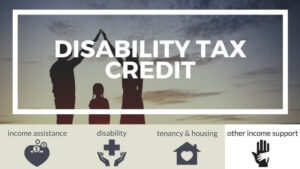USA - Federal Student Loan Instead of a Private Loan?
What is the Main Benefit of Taking Out a Federal Student Loan Instead of a Private Loan in USA?
For students seeking financial relief while funding higher education, choosing between a federal student loan and private loans for students, such as a SoFi student loan, is critical. Federal education loans, offered through the Department of Education student loans program, stand out for their debt-relief-friendly features.
The main benefit of a federal student loan over a private loan is its lower, fixed interest rates combined with flexible repayment options, which significantly reduce the burden of federal student debt and offer pathways to financial relief through programs like student loan forgiveness.
How Lower Rates and Flexible Repayment Ease Debt Burdens
The primary advantage of a federal student loan lies in its affordability and flexibility, making it a cornerstone of government student aid for managing federal student debt. Unlike private loans for students, which often carry high, variable interest rates, federal education loans offer fixed rates that stay constant. In 2024, Direct Subsidized and Unsubsidized Loans for undergraduates have a fixed rate of 6.53%, compared to private loan rates, like those from a SoFi student loan, which can soar to 15% or higher based on creditworthiness. This fixed-rate stability, accessible via studentaid.gov, ensures predictable payments, a key factor for those seeking tax and debt relief.
Additionally, federal student loans provide repayment flexibility unmatched by private lenders. Income-driven repayment (IDR) plans cap payments at 10-20% of discretionary income, easing monthly burdens for borrowers managing federal student debt. These plans can also lead to student loan forgiveness after 20 or 25 years, offering significant relief.
For those juggling multiple loans, loan consolidation student loans through Direct Consolidation Loans simplifies repayment by combining federal education loans into one payment, often with extended terms to lower monthly costs, though total interest may increase. Consolidating student loans, available via studentaid.gov, is a practical step for debt management.
Federal loans also allow deferment and forbearance, pausing payments during financial hardship, with Direct Subsidized Loans accruing no interest during periods like in-school enrolment or a six-month post-graduation grace period, further reducing costs.
Additional Debt-Relief Benefits of Federal Student Loans
Beyond the core advantage of affordability and flexibility, federal student loans offer features that support financial relief, unlike private loans for students:
- No Credit Check for Accessibility: Most federal student loans, like Direct Subsidized and Unsubsidized Loans, require no credit check, unlike private loans, making them ideal for students with limited credit seeking debt relief.
- Student Loan Forgiveness: Federal student debt qualifies for programs like Public Service Loan Forgiveness (PSLF), which forgives remaining debt after 120 qualifying payments for public service or nonprofit workers—a relief option rarely available with private loans like a SoFi student loan.
- Grace Period for Breathing Room: A federal student loan includes a six-month grace period after graduation or dropping below half-time enrollment, helping borrowers stabilize finances before repayment begins.
- Subsidized Interest Savings: Direct Subsidized Loans, for students with financial need, don’t accrue interest during school or deferment, lowering the overall cost of federal student debt.
These features, backed by government student aid, make federal education loans a strategic choice for students aiming to minimize debt burdens and achieve financial relief. You can check the advantages of federal student loans on USnews.com
Smart Borrowing for Debt Relief
While a federal student loan offers clear debt-relief advantages, careful borrowing is key. Only borrow what’s necessary, as federal student debt still accrues interest. Completing the FAFSA annually via studentaid.gov unlocks government student aid, including grants and scholarships that reduce borrowing needs.
For those with multiple loans, consolidating student loans can streamline repayment, but weigh the potential for increased interest over time. If federal aid falls short, private loans for students, like a SoFi student loan, may be considered, but their higher rates and limited protections make them less favourable for debt relief. Consult your school’s financial aid office and compare options to align with your financial goals.
Frequently Asked Questions (FAQ)
Why is a federal student loan better than a SoFi student loan for debt relief?
A federal student loan, managed by the Department of Education via studentaid.gov, offers fixed rates, income-driven repayment, and student loan forgiveness options like PSLF, easing federal student debt. A SoFi student loan, a private loan, often has higher, variable rates and fewer relief options.
Do federal education loans require a credit check?
Most federal student loans, like Direct Subsidized and Unsubsidized Loans, don’t require a credit check, making them accessible for students seeking debt relief without established credit. PLUS Loans, however, do require a credit review.
Can I get student loan forgiveness for federal student debt?
Yes, federal education loans qualify for student loan forgiveness programs like PSLF, which cancels debt after 120 qualifying payments in public service or nonprofit roles. Private loans for students typically don’t offer this relief.
How does consolidating student loans help with debt relief?
Consolidating student loans combines multiple federal education loans into a Direct Consolidation Loan via studentaid.gov, simplifying repayment and potentially lowering monthly payments, though total interest may increase over time.
How do I apply for government student aid?
Apply for government student aid, including federal student loans, by submitting the FAFSA annually at studentaid.gov. Your school will assess eligibility based on financial need and other factors.


